How to Have a Busy Clinic with Less New Patients

I used to believe that if I just figured out how to get "enough" new patients that my practice would become full. I would feel successful. And I could tell myself that I had "made it."
I wasn't wrong, but my beliefs were wildly incomplete...
Most of us will always need new patients.
Because the ones we have will eventually leave. They get better. They ghost off. Or life takes them somewhere else. Too far away to continue care...
There are many reasons why patients leave, but the reality is if we want to have a sustainable practice we will need to find effective ways of attracting new ones.
This is where so many practitioners get stuck.
"I NEED MORE NEW PATIENTS" becomes the mantra.
And while it's true, it's also a symptom of a larger issue, which has to do with Density...
The more Density we have in our patient relationships, the less Volume of new patients we need.
If you think you need more new patients, you're probably right. But "more new patients" is a stepping stone goal. Not the real goal.
When pressed most of us are really trying to have a sustainable practice, be able to support ourselves (and loved ones) with a good quality of life, dive deeper into the medicine, make a positive impact on the people we help, make our communities stronger...
More new patients is a step in that direction, and what if we explore some counterintuitive ways to achieve the real goals?
First let me draw you a picture...
This is your practice visualized as a system:
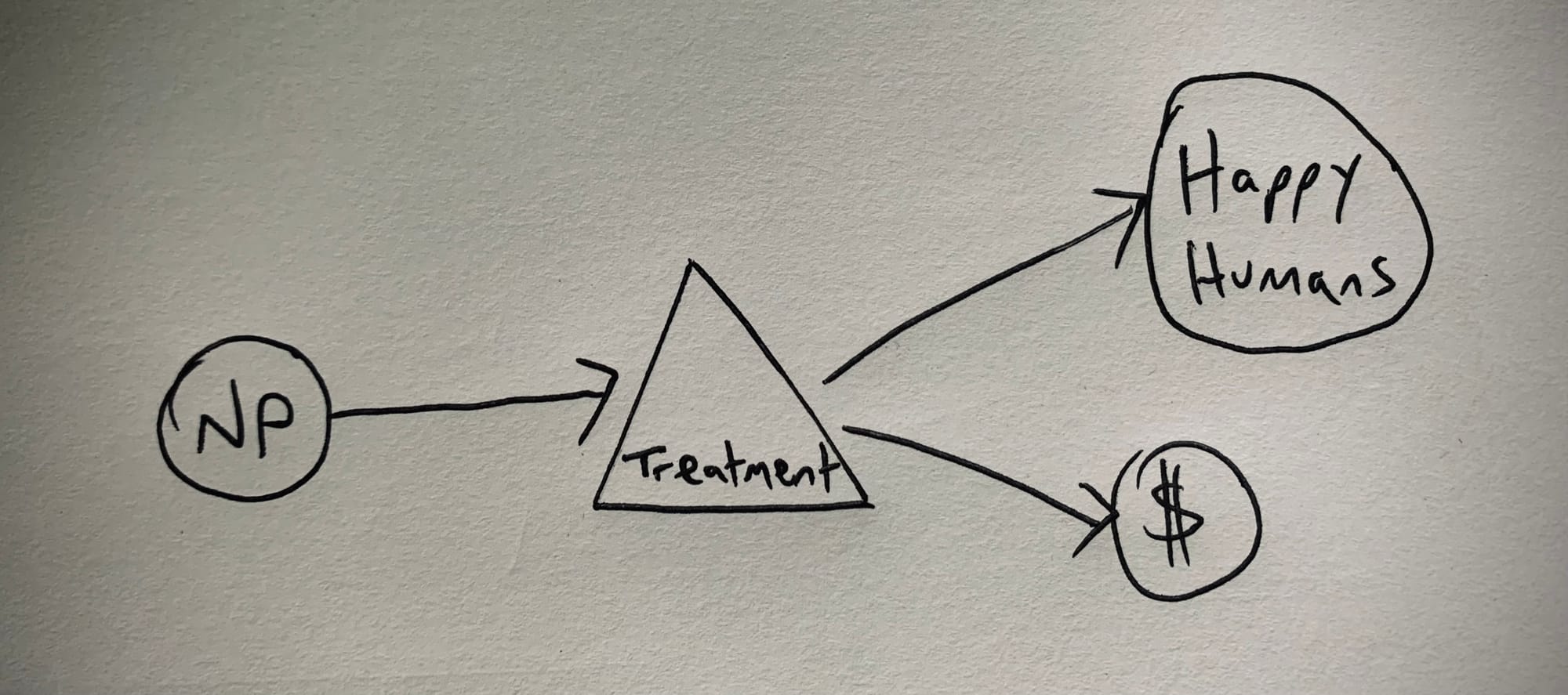
Of course not everyone who enters your practice winds up completing care and getting all of their goals met.
Some of the new patients will quickly drop out of your system:
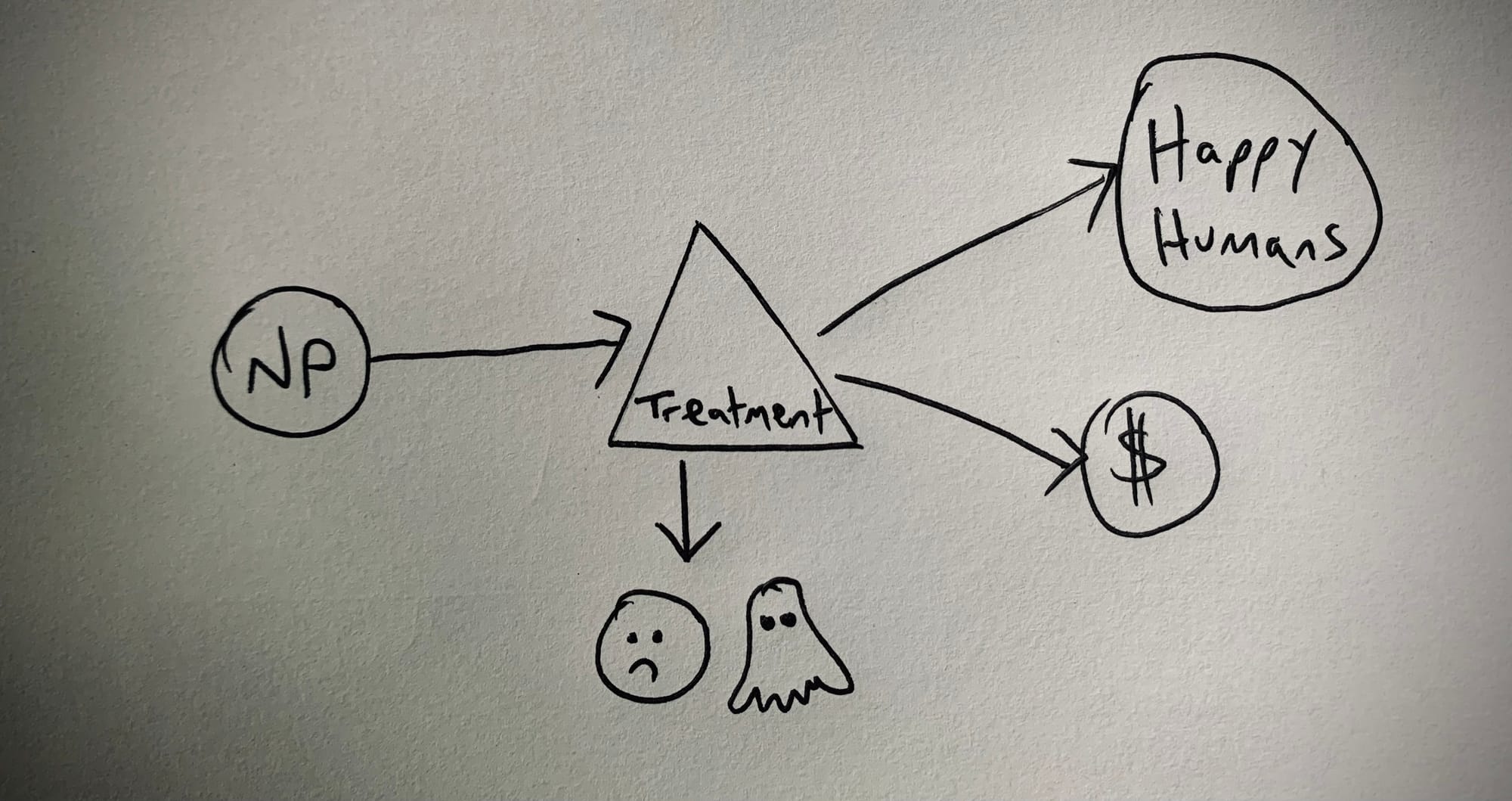
We want to optimize for happy humans as our output goal. Because too many sad ghosts are bad for morale...
Especially once we understand feedback loops:
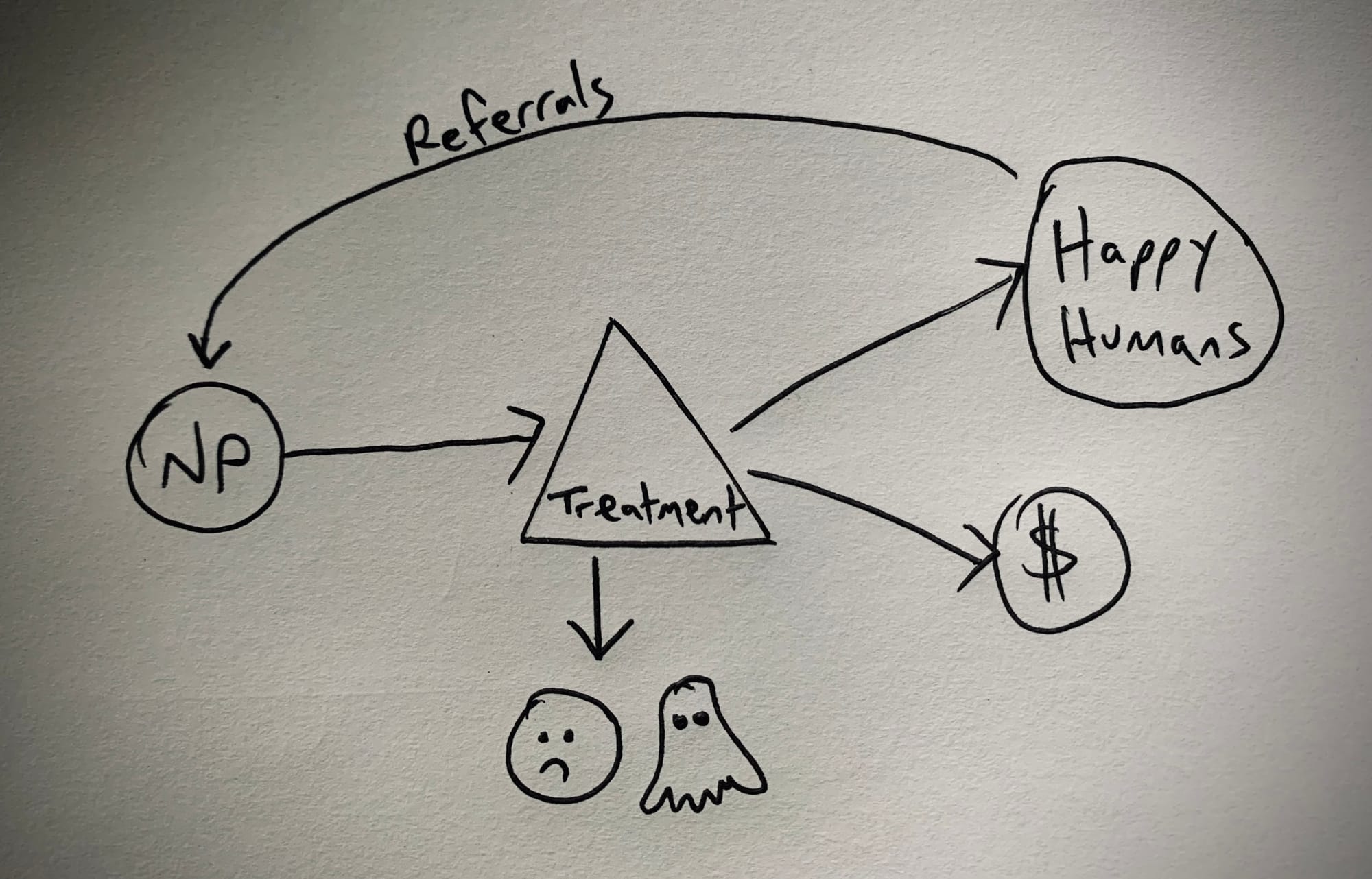
If we want a "sustainable practice" then we need to define that term. When thinking in systems, a system is sustainable when its outputs create inputs.
For our practices that means the outputs of "happy humans" referring friends and family to become new patients has completed that loop.
Likewise if our practice is producing cash, we can then use some of that cash output for advertising to create more new patient inputs.
we can also use some of that cash to improve our own treatment/business skills which makes the process itself more efficient
To really grow a practice we need to utilize network effects and the nonlinearity that emerges when every happy human refers 2 or more of their friends, who each in turn refer 2 more, who each in turn refer 2 more...
That's how you grow it.
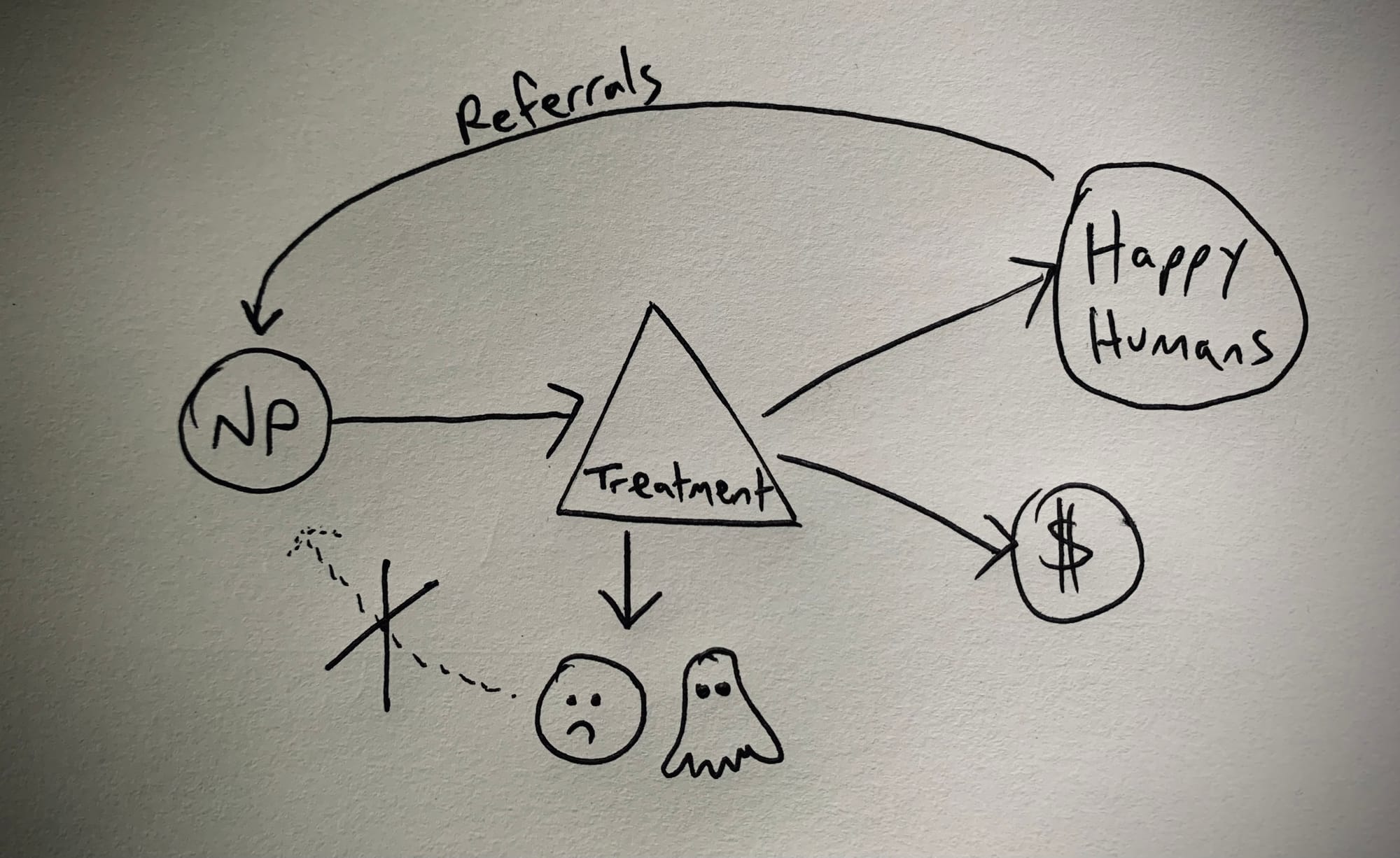
Now that you can see your practice as a system (with inputs, processes, outputs and feedback loops) it should start to become clear that "more new patients" isn't the only, or even most effective way to improve this system.
What we really want is "density." A high ratio between the Happy Humans and the Sad Ghosts.
The more happy humans, the better. And if we can minimize sad ghosts? Fantastic.
So let's look at some of the leverage points you can control:
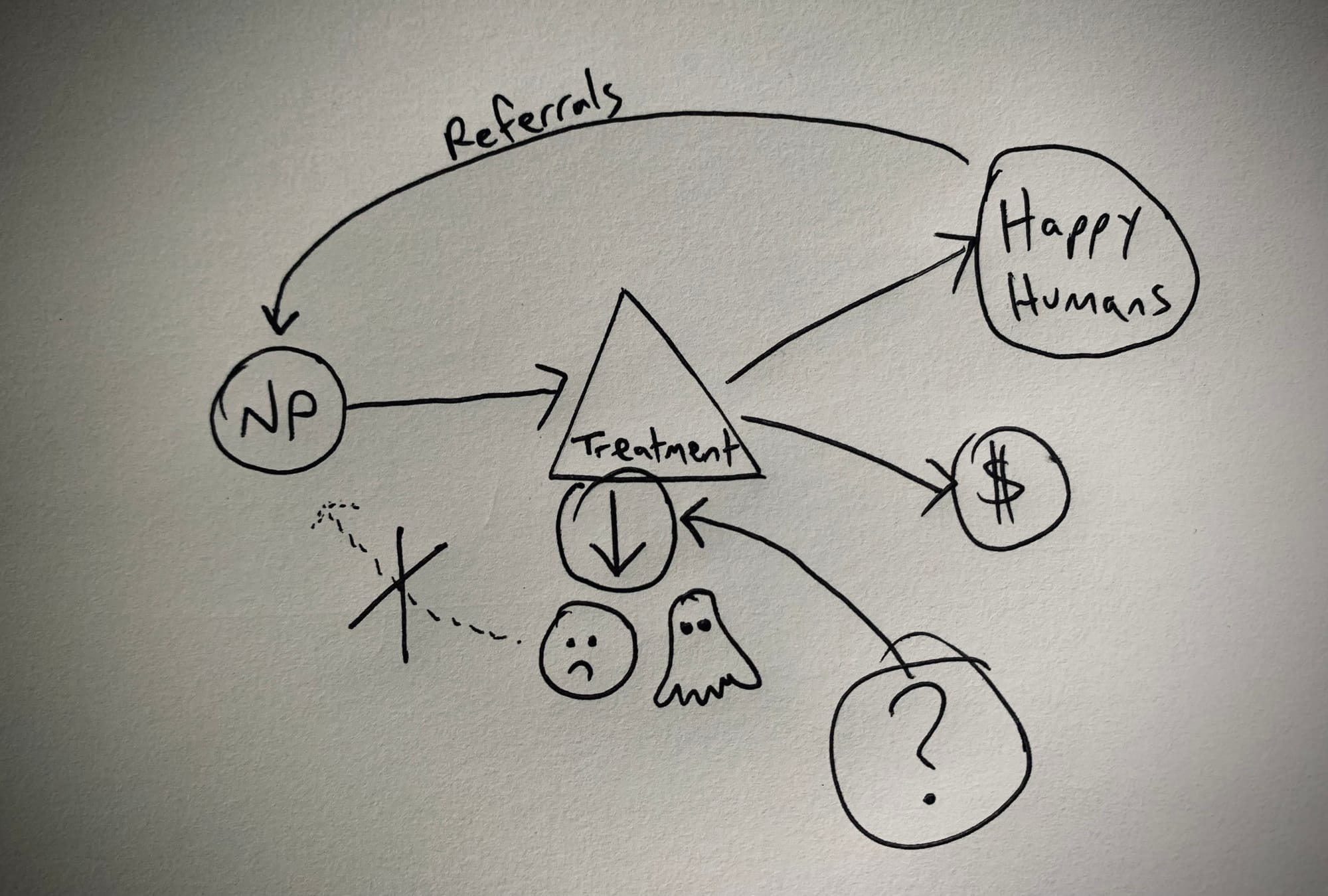
Once someone has entered your world, they have the option of sticking with it or leaving.
This is a subconscious decision that is being made every single day. We can't (and shouldn't) try to force people to stay.
That's silly.
3 Reasons for New Patients becoming Sad Ghosts and what you can do today:
- The treatment isn't effective.
This one makes sense because the person needs results. If you aren't capable of delivering those results they must go elsewhere.
Most practitioners assume their clinical skills are the weak point in the chain and most times they're 100% wrong.
Going to seminars, hitting the books, talking to mentors.. All of that is important and we must do it to improve our technical skills. But even with a basic education most of us have skill imbalances that look like this:
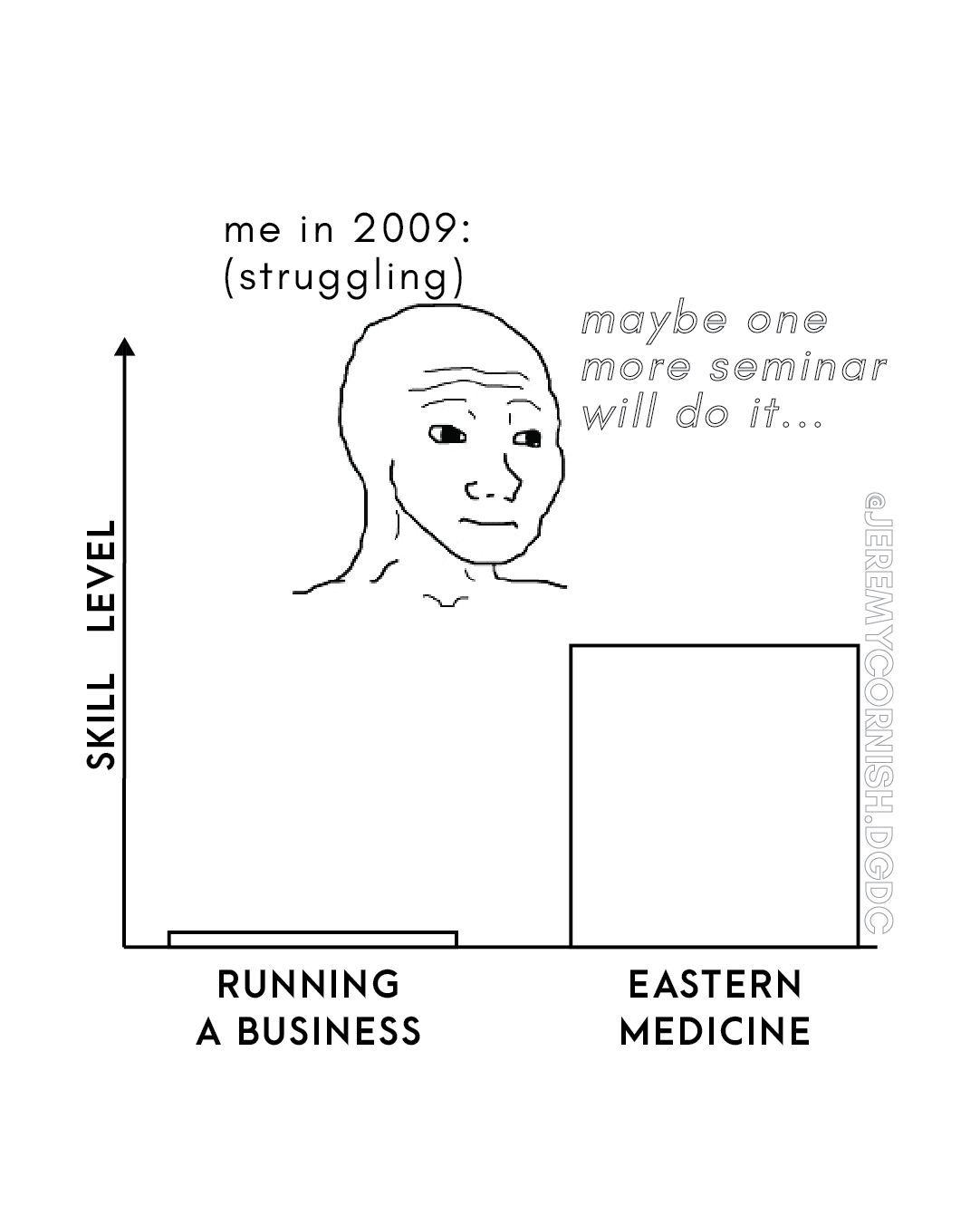
In reality most of us have the technical skills to solve most problems. The issue is more to do with communication.
Because healing is a process, we must set expectations up front. Explaining clearly and articulately what this process looks like for that case.
We have to develop prognosis skills that often aren't taught in schools or seminars.
And to get away from being afraid to say something just in case you're wrong, it helps to reframe prognosis from "how long until I'm fixed" to "how long until this treatment kicks in and we know if it's worthwhile to continue or not?"
If you can really internalize that one reframe you've likely just doubled your income and patient results...
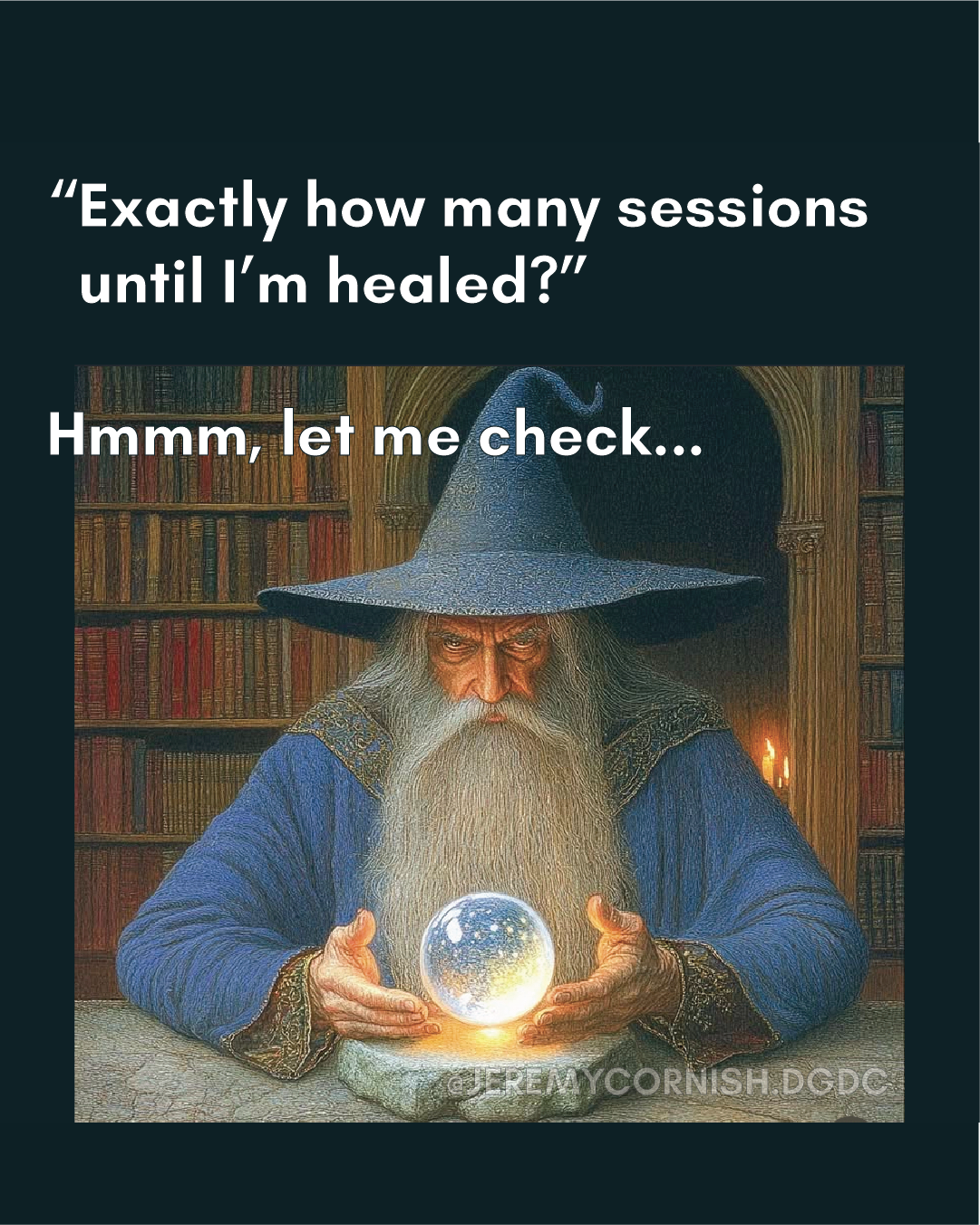
You need to get this distinction.
- Outside Variables.
What is the difference between these two scenarios?
"Hi patient, we changed your herbs at the last appointment. How have you been feeling since?"
"I feel like shit. Headache. And my bowels are going crazy."
"Uh oh. I have made a mistake and must change the herbs"
Makes sense right?
But the real mistake we make is not getting clarification:
"Hi patient, we changed your herbs at the last appointment. How have you been feeling since?"
"I feel like shit. Headache. And my bowels are going crazy."
"When did that start?"
"It started this morning. I was up late and went through two bottles of wine last night. I got some bad news at work yesterday and needed to blow off some steam."
"I see. Have you noticed any changes in your main complaints from the herbs?"
"Not yet. Honestly I only took them once since the last visit. There's just been a lot going on"
Look. By developing our skills at communication we've now avoided making treatment mistakes.
The result of the patient's current state in this case is outside of your control.
Does that mean we blame the patient for everything? No. But it does mean we take the extra energy to get clear communication so we can make some distinctions and better decisions.
Also now we have opened a dialogue where we can meet them where they are and align them to the reality that much of their results will require active participation.
Bonus here for not judging and alienating the patient. Making people feel bad and wrong is a quick way to lose them.
Better to have a sense of humor about it...
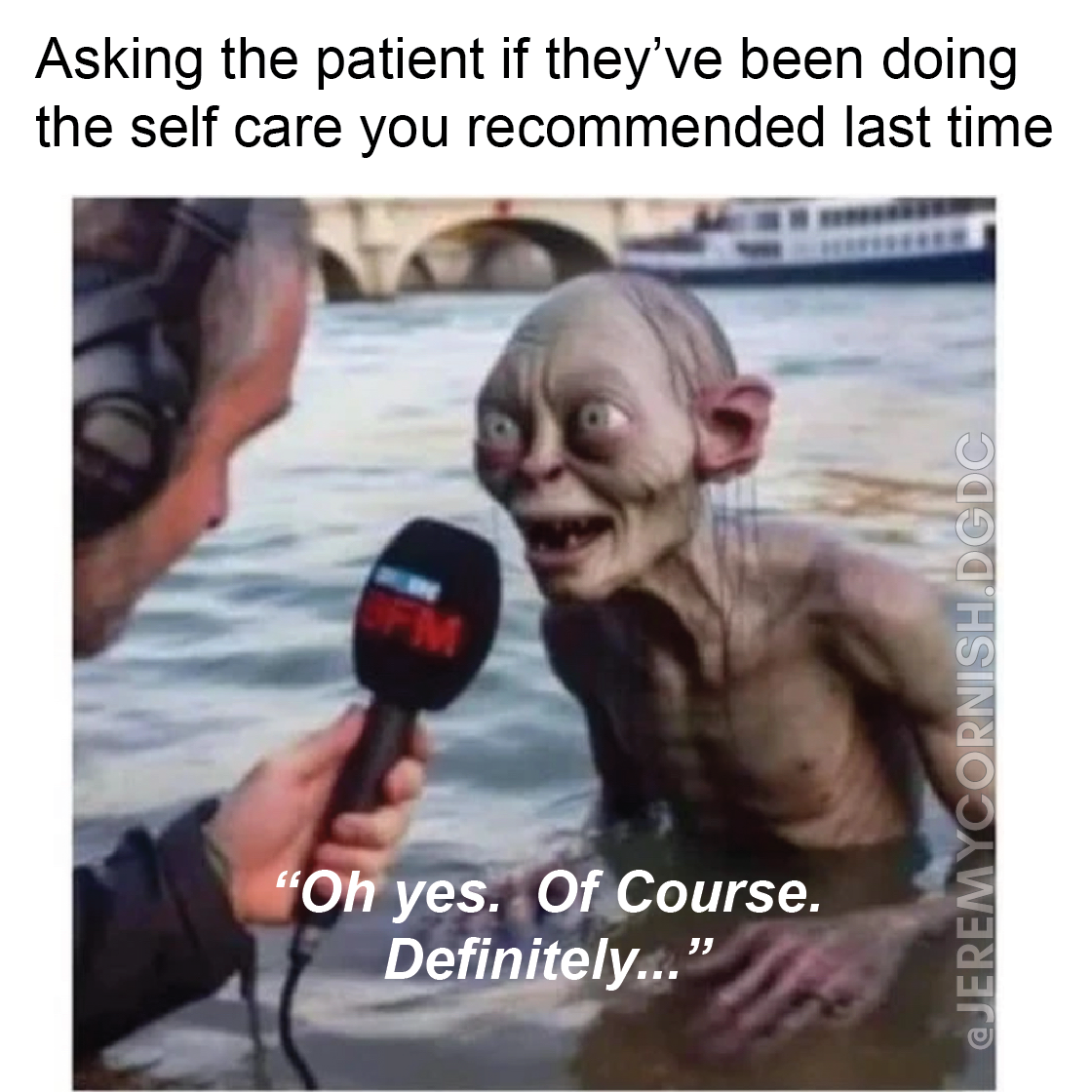
- Your treatment menu sucks.
One of the keys for patients to get the results they deserve is having a long term, committed mindset.
If you're operating under the "visit by visit" frame, then you've subconsciously aligned all of your patients to think short term.
Yes we can have a "per treatment" price for people who want to pay as they go.
And that is great.
And. What happens when we add larger commitment options to our treatment menu?
For example a 12 pack of treatments. Or a 30 pack?
"Jeremy this sounds great but who will buy a package?"
Loads of people. As long as you design it right.
"High ticket sales sounds pushy"
Sure, if you're pushy about it... Really it's a way to incentivize long term thinking and create a more committed working relationship with those you serve.
"Jeremy I live in Canada, Australia or somewhere else with draconian restrictions on what I can and can't do professionally. Will this work for me?"
There are plenty of ways to achieve higher commitment levels without using packages.
Another would be memberships. And comprehensive programs.
Another would be creating online programs that are high ticket annual memberships and enrolling people all over the world where you have more freedom to operate than in your restricted home area.
We have an international community of bright practitioners and all sorts of creative and proven models in the Damn Good Doctors Club. We're talking about these things every day.
The more we align everything we do to optimize long term working relationships, the better results our patients will get, the more "happy humans," the more nonlinear network referral effects, and the less we have to worry about where the next patient is going to come from.
It all comes back to density.
You may find that with the right systems in place you need less and less new patients, are getting better results, and making way more money.
Honestly it's getting ridiculous that anyone with even a foundational eastern medicine education should have to worry about cash flow with what we know how to do and how many people need our help.
You are sitting on an untapped pot of gold.
Now let's get to work...
Sound on. I pulled this video from my instagram




